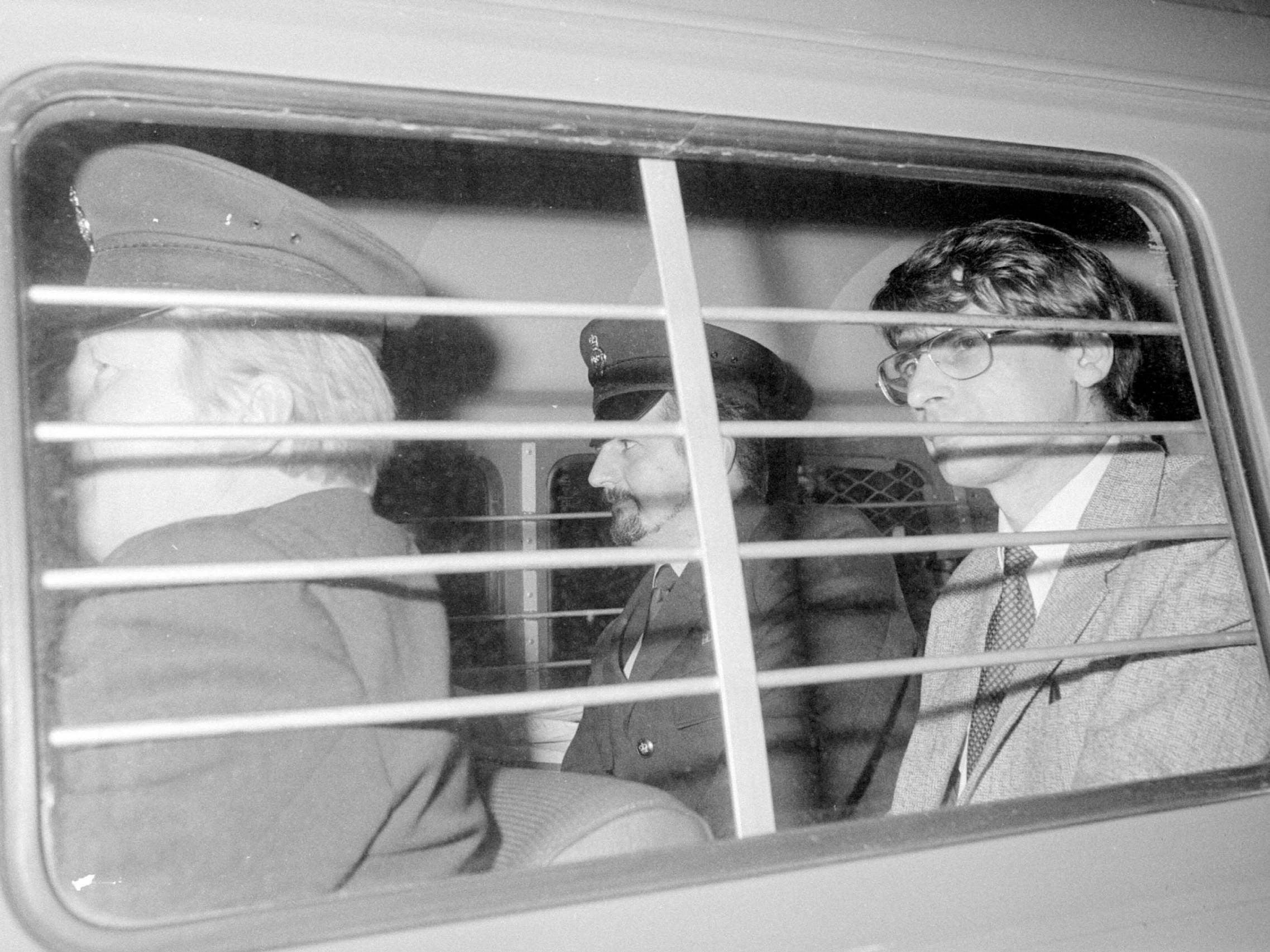Dennis Nilsen: Serial killer ‘lay dying in his own filth’ in prison cell, inquest hears
‘Muswell Hill murderer’ is believed to have killed up to 15 men at his north London home during 1970s and 1980s

Serial killer Dennis Nilsen spent his final moments lying in his own faeces in his prison cell as he died from internal bleeding, an inquest has heard.
The 72-year-old, known as the Muswell Hill murderer, died at HMP Full Sutton in May last year, 34 years into his life sentence for committing a string of murders in the late 1970s and early 1980s.
The infamous killer is believed to have murdered up to 15 men, most of whom were homeless homosexuals, at his north London home.
His inquest at Hull Coroner’s Court heard how the killer had isolated himself from other inmates and staff but was otherwise a good prisoner, despite regularly refusing to engage with healthcare services.
A coroner heard how he spent his final hours in prison in “excruciating pain”, lying in his own filth as he suffered a ruptured abdominal aortic aneurysm.
The inquiry heard how the killer was in a “pale” and “ashen” state prior to his eventual death.
Recording his verdict, coroner Professor Paul Marks simply said: “Dennis Andrew Nilsen died of natural causes.”
During his killing spree, Nilsen would befriend his victims in pubs and bars in London before luring them back to his flat, where he would kill them and sit with their bodies before dismembering them.
His crimes were only uncovered when a drain outside his home in Cranley Gardens, Muswell Hill, became blocked by the human remains he had tried to flush away.
Nilsen was jailed for life with a recommendation he serve a minimum of 25 years in 1983, on six counts of murder and two of attempted murder. The sentence was later upgraded to a whole-life tariff.
The killer’s inquest heard how he was found hunched over in pain in his cell on the morning of 10 May last year but, after healthcare assistants found his pulse and blood pressure were within normal range, he voluntarily returned to his cell.
At about 5pm that day, an ambulance was called to HMP Full Sutton, East Yorkshire, after it was found that his condition had deteriorated – but a Prison and Probation Ombudsman report found there was an “unacceptable delay” of about 40 minutes in calling the ambulance to the prison.
Paramedics found that the prisoner had a “pulsing abdominal mass”, which was later found to be the ruptured abdominal aortic aneurysm and a high aspiration rate of 40, where normally one of between 16 and 20 would be expected.
The infamous murderer was taken to hospital in York where he had emergency surgery but, despite the procedure being successful, he died on 12 May after being unable to cope with the blood loss and stress of the lengthy surgery.
The medical cause of death was given as a pulmonary embolism and retroperitoneal haemorrhage, linked to the ruptured aneurysm.
The report from the Prisons and Probation Ombudsman also stated that Nilsen had been left to “lay in his own faeces, deteriorating for two-and-a-half hours” after rejecting the opportunity to be seen for longer in the healthcare wing on the morning of 10 May last year.
But it also stated that the treatment he initially received in prison was “commensurate with that which he would have received in the community”.
Additional reporting by Press Association.